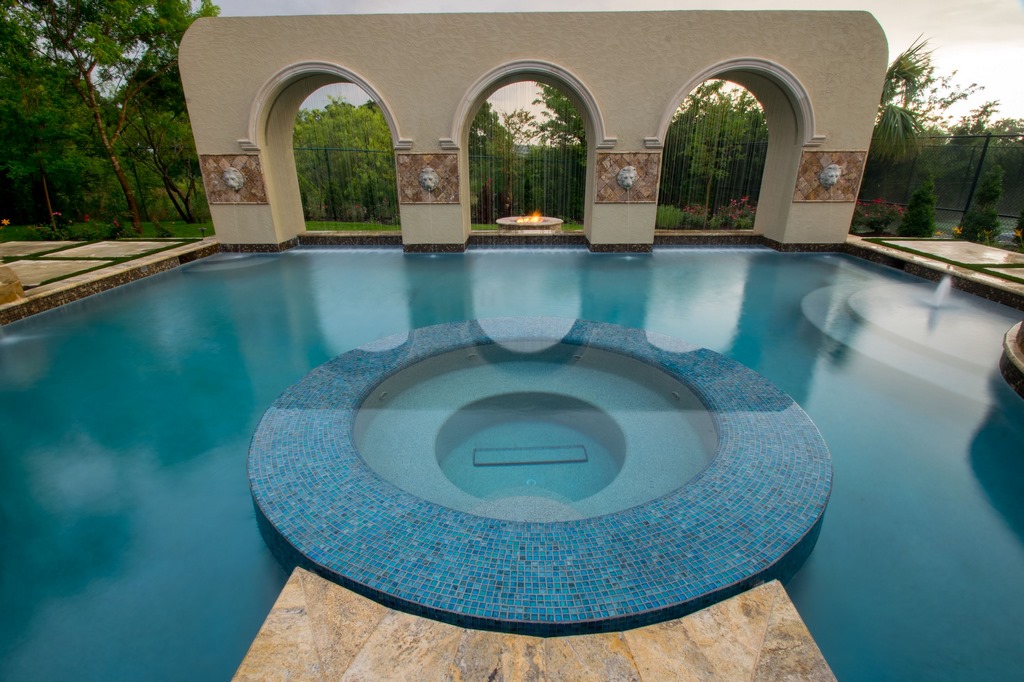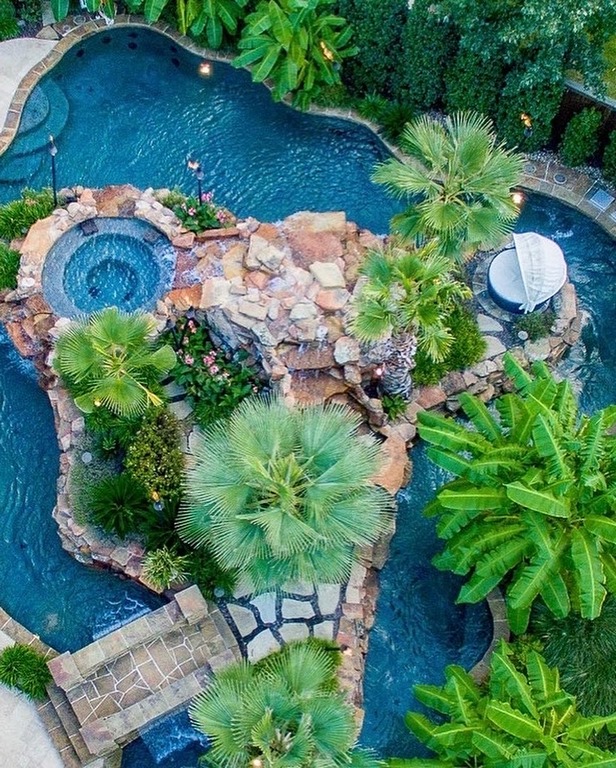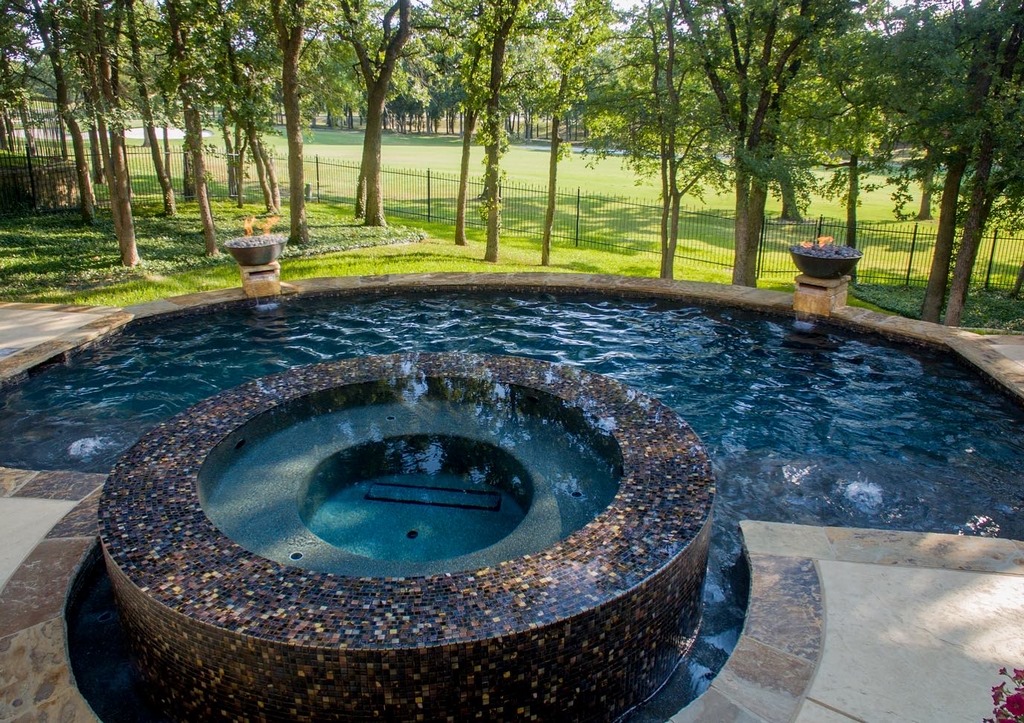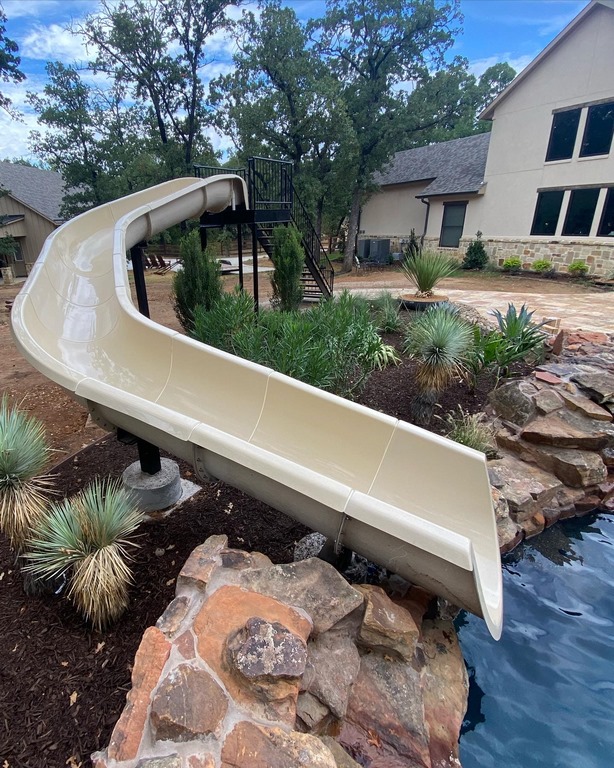Spatial Emotions
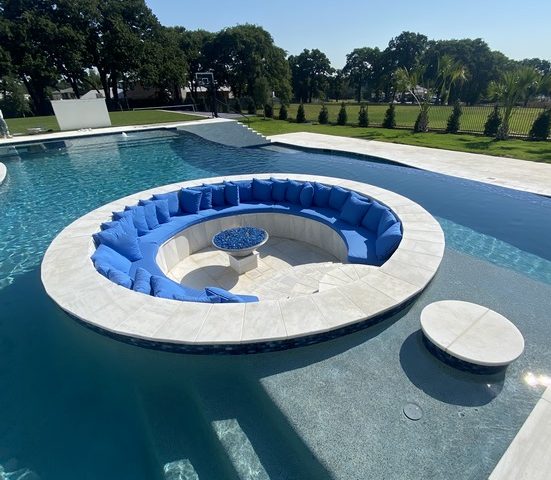

Designing spaces for human use — especially those of the recreational variety — starts by understanding that the primary goal is to generate a positive emotional response, regardless of style, the size of the property or the client’s budget. That’s why Mike Farley considers the ways that different spatial configurations make his clients feel.
By Mike Farley
Twenty years ago, I used to tell people that I designed and built swimming pools for a living. That’s changed. Today, I’d estimate that pools account for somewhere around 20% of what I do. They’re still an important part of the work, no question, but it’s the spaces around the pools that represent most of my design efforts.
Creating spaces first and foremost requires understanding the emotional impact they will have on the people who use them. More than anything, we are in the business of creating experiences for our clients. Knowing your clients’ preferences for those experiences, especially the way they emotionally react to a given spatial design, is arguably the best way to ensure your work will be successful in your clients’ minds.
That sounds simplistic, but it leads to a very profound question that drives the design choices you make on their behalf. Why do they want what they want? Truth is, none of us can know the answer when we first meet new clients.
INFLUENTIAL EXPERIENCE
Experience has taught me that for many, if not most people, their preferences are largely based on memory, especially childhood memories. Whether consciously or unconsciously, many people are trying to recreate a place that brings back those memories — ones that makes them feel the way did as a child, or at least how they remember feeling.
I’ve thought about how that applies in my own life. Growing up my dad and I were very close. My favorite memories of our time together were always outdoors. He was a big hunter and outdoorsman, and we spent a lot of time in nature on different adventures.
As an adult I’ve always wanted to live in the woods and spend as much time as I can back packing and exploring the natural world. I’m certain my dad, and memories I have with him, were a big influence and have impacted where I feel most happy.
Obviously, that kind of memory association is common with many people. When it comes to designing spaces that capitalize on those preferences, there’s another, deeper level worth exploring, and one that I have found enormously useful in my design work.
Many years ago, I read a book called the “Inward Garden” by Julie Moir-Messervy. I reviewed it for WaterShapes back in 2010, and it’s worth revisiting here. In the years since I read it and wrote about it, I’ve found over and over how insightful her approach design can be.
ICONIC ARCHETYPES
In a nutshell, Messervy breaks down the concept of garden spaces into seven categories, which she calls “garden archetypes.” They include the sea, the cave, the harbor, the promontory, the island, the mountain, and the sky. Each of these categories represents a spatial configuration within a garden that evokes an emotional response.
Understanding which of these archetypes are most important and emotionally evocative for a given client is one of the keys to creating spaces that have the greatest ability to generate a positive response.
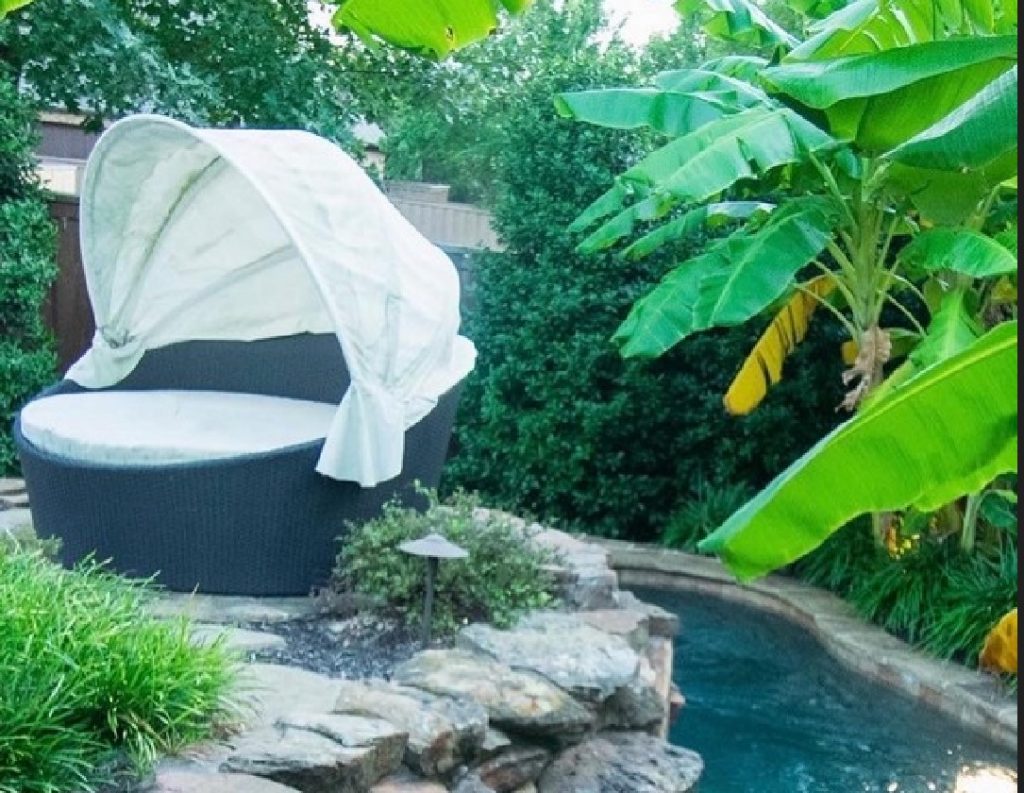
I’m no psychologist and don’t pretend to understand exactly why some people respond to some designs and not others, but having these archetypes in mind helps me make suggestions and guide the clients based on their responses.
Many of my designs include more than one of these configurations because, often times, the husband and wife will have different ideas about what they want. It’s also important to note that these spatial types can exist in any style. It’s not an exact science by any means, but a very useful set of guidelines.
Here’s a breakdown of how these archetypes are manifested in a design:
THE SEA
This one seems obvious for those of us who design and install bodies of water. The desire to be near water is arguably the driving force behind the willingness to spend large sums of money on pools, spas and other types of watershapes.
It’s also important to recognize that ocean experiences are among the most cherished and influential memories for many, if not most people. One of my more well-known projects was a lazy river I designed and installed several years ago. The client was inspired by memories of vacationing on Maui with his family as a kid and was very clear that he wanted to give that experience to his grandchildren, but in his backyard. Despite the limited space, we were able to create an environment that captured the emotions of being in a lush oceanic setting.
As Messervy explained in a 2011 interview with Organic Spa Magazine, you don’t need water to work with the sea archetype because more than anything, it’s about immersion. “This spatial archetype corresponds to the mother’s body, to being in the womb, where we are submerged and protected,” she says.
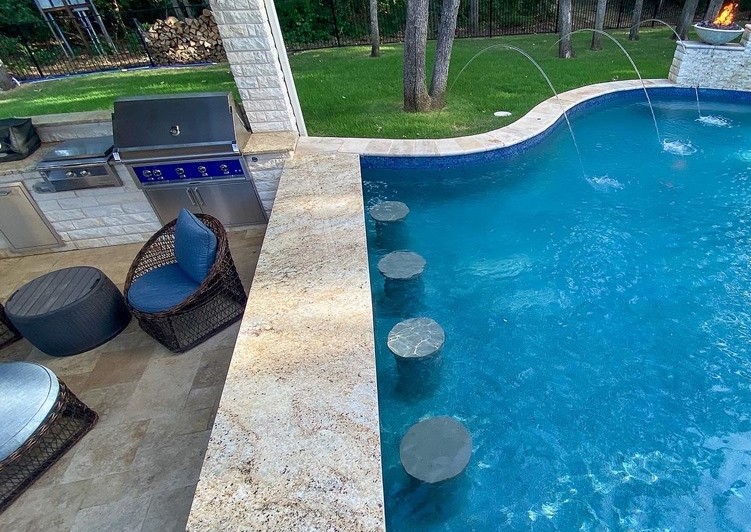
“We experience this spatial archetype when we swim, soak in a tub, or stand in a shower. You could plant a wildflower meadow with a clearing just large enough to sit in, or plant a cozy area encircled by tall ornamental grasses. Think about what sort of spaces make you feel immersed and then try to create that sensation in an outdoor space.”
For watershapers, this is the easiest one to create. In fact, it’s almost impossible to avoid because whenever you take a dip in a pool or spa, you’re immersed and psychologically speaking, you’re in the sea.
THE CAVE
This one comes up quite a bit. Some people love caves and some people do not at all. The cave is simply a space that encloses you on three sides and overhead. For some, it reminds them of being in a safe place, or hiding as a kid. For others, it feels confining and claustrophobic.
I grew up in Lubbock, TX, which is about as wide open as you can get and about as opposite from a cave-like setting as possible, and I’m very comfortable with it. But, that wide open feeling drives some people crazy. Maybe they grew up in a forest area and appreciate the feeling of being enclosed because it makes them feel safe and secure. Those are the people I’ll steer towards a sort of cave structure.
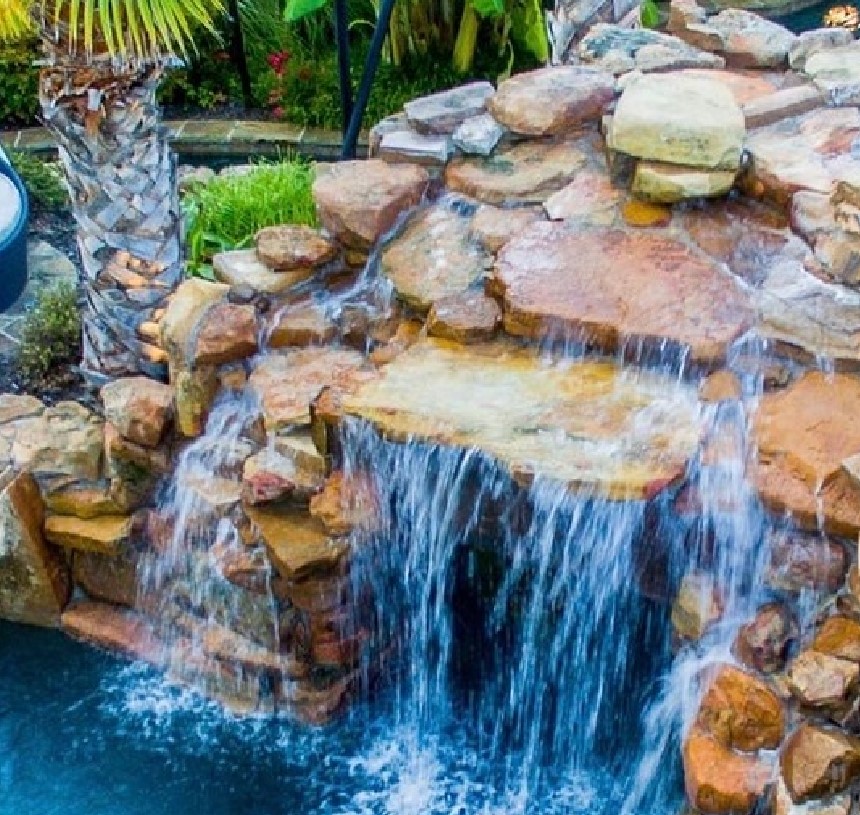
Messervy relates the cave to being in the womb, where we were safe, secure, and nurtured. “The cave is about leaving our mother’s body and the sensation of immersion, but once we emerge, we are held close and tight. We are swaddled and have just a tiny, framed view of the world from our snuggly or crib,” she explains.
“Ways we can invite the cave archetype into our gardens include building a little garden cottage, teahouse, artist or writer’s studio, playhouse, or even tree house. All of these create a sense of secure enclosure with a small view of the outside world.”
THE ISLAND
This is about being surrounded, particularly by water. In recent years, we’ve seen some extremely innovative designs that are based on the island concept. Sunken fire pits in the middle of pools are a dramatic example. Islands in the center of lazy rivers is another.
It’s interesting how those two elements were almost unheard of just a few years ago, but now they have grown in popularity by leaps and bounds. I believe that’s happened because islands can be very emotionally evocative.
In both cases you create a setting that is completely removed from the rest of the yard, giving you a sense of entering a state of physical isolation, like you’re in your own world. But it doesn’t have to be that elaborate.
As a more modest example, I like to place large flat boulders in the middle of shallow lounging shelves, which have become incredibly popular. The boulder gives you a place to sit, relax or climb that’s completely surrounded by the shallow water. I’ve also placed spas in the middle of pools to create the island.
However you do it, the island creates that feeling of being “away.”
THE HARBOR
The harbor is a space that’s sheltered on three sides, but then opens up to a much larger area or view. Sometimes, simply the way that a property on a hillside opens up to a view functions as a harbor. While, in other situations, you create that feeling within the yard where there’s a niche or nook that overlooks the entire space; or, perhaps an area nestled in trees opens up to a lawn or meadow.
Messervy explains the harbor this way: “As we start to leave the mainland behind, our vision opens up and we begin to see what lies beyond. This corresponds to being a toddler. It is like sitting in the lap of a parent, held by secure, enclosing arms. It is a nested experience, in that we are embraced, but we now have an expanded view.
This is the feeling we get when sitting in a big wing chair in a living room, a booth in a bar, or in a backyard surrounded by a fence. Most gardens already embody the harbor archetype, but you can really bring the harbor feeling into your garden by placing a bench in a location with a secure background and a good view.”
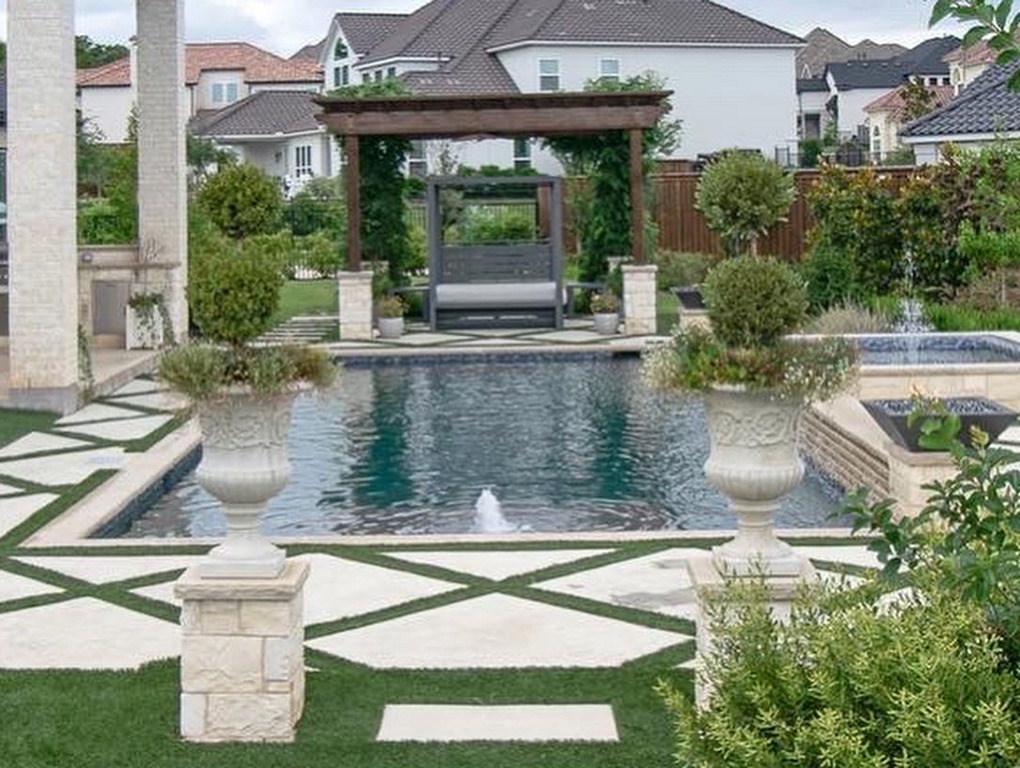
THE PROMONTORY
The promontory is a place at the edge that is still backed up by or connected to something bigger: to the mainland, or the home itself. It’s that feeling of moving from a very secure environment into the unknown, or somewhere new, or different locale.
Messervey explains: “Think about the child starting to explore the world. She leaves the laps of her parents and wanders out to an edge, starting to explore, but still looking back, still connected. The promontory archetype is about edges and edge conditions.
“You can create this feeling with a terrace, a porch, or a belvedere (a gazebo sited to command a good view). The promontory archetype inspires us to explore the edge between inside and outside, between here and there. It should have a sense of excitement, of going beyond your comfort zone.”
I suspect this would be one of my own favorite archetypes. I’ve always spent quality time in nature. When backpacking, I like to set up camp on the edge of meadow, just inside the tree line. It gives me that feeling of being nestled in the forest but on the edge of an expanse.
Many of my clients seem to enjoy that same feeling.
THE MOUNTAIN
This is kind of the opposite of the cave. Rather than being enclosed, the mountain gives you the exhilaration of rising above it all. It’s another example of childhood experiences living on through the rest of life. Kids love to climb and feel like they’re kings and queens of the mountains, as do many adults.
There are numerous ways to create higher ground including rock structures (which can function as both a cave and a mountain) to elevated decks, balconies, or destinations on hillsides or hill tops. It can be the top of a slide or something as simple as a berm in the landscape that overlooks the rest of the yard.
THE SKY
This design archetype is all about moving through space, particularly through the air. When I think of these archetypes, I’m always looking for specific features that will fit into a backyard space. In this case, the sky could be a swing, rope bridge, zipline, slide or a hammock.
The sky evokes adventure and motion, and above all else freedom and fun.
SOURCES OF INSPIRATION
It’s helpful to keep in mind that these are not hard and fast rules by any means, but rather a general framework that you can use to guide client discussions and later your specific design decisions. I’ve certainly found that understanding the kinds of spaces that will make a client comfortable, excited and happy — and those that will have the opposite effect- — is extremely useful in our efforts to create places our clients enjoy the most.
Mike Farley has 30-plus years of experience creating custom pools and landscapes. He has designed more than 750 unique projects that have been built to date, winning numerous awards in both California and Texas. He is widely published and is one of the watershaping industry’s most experienced and sought-after instructors.










